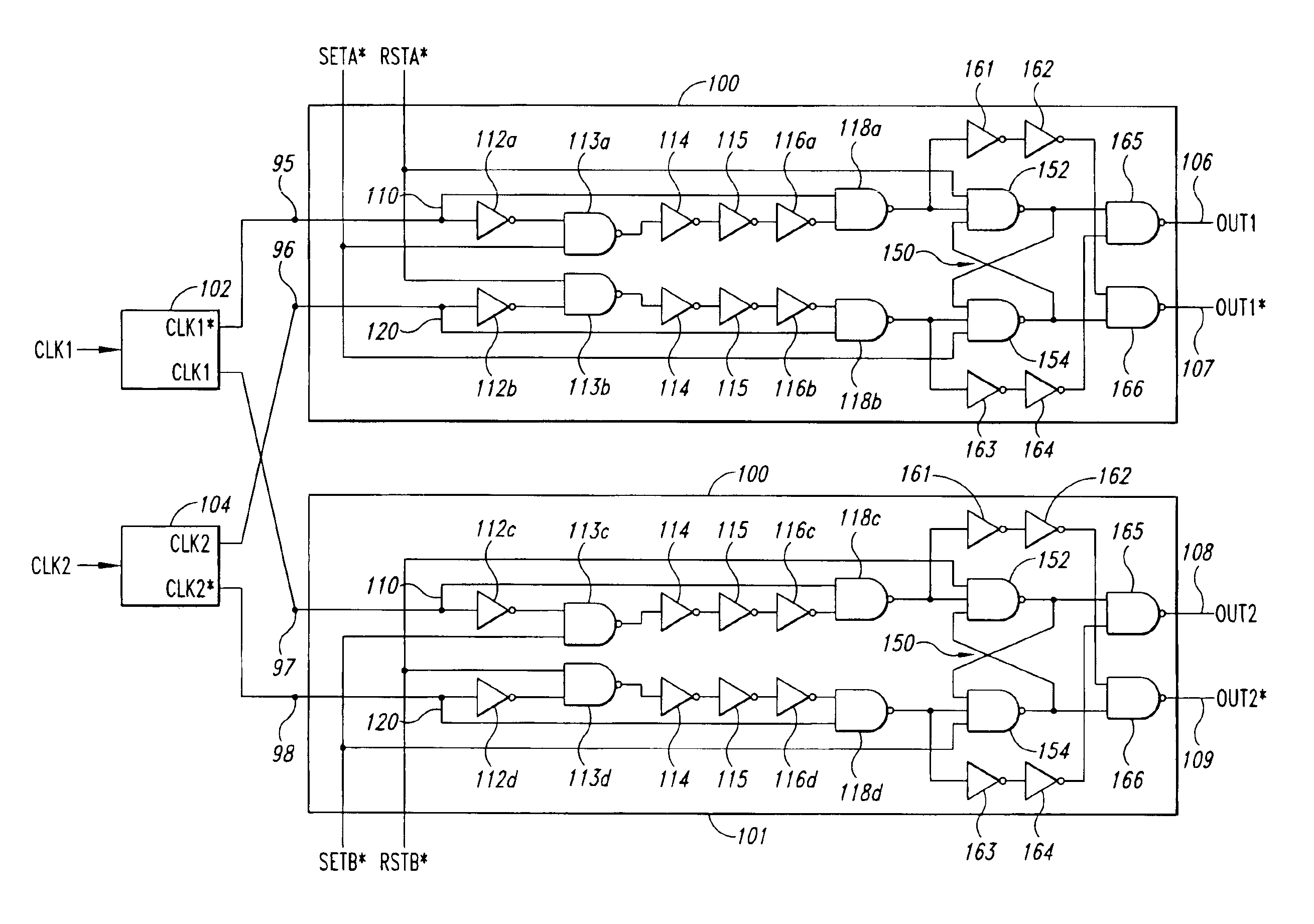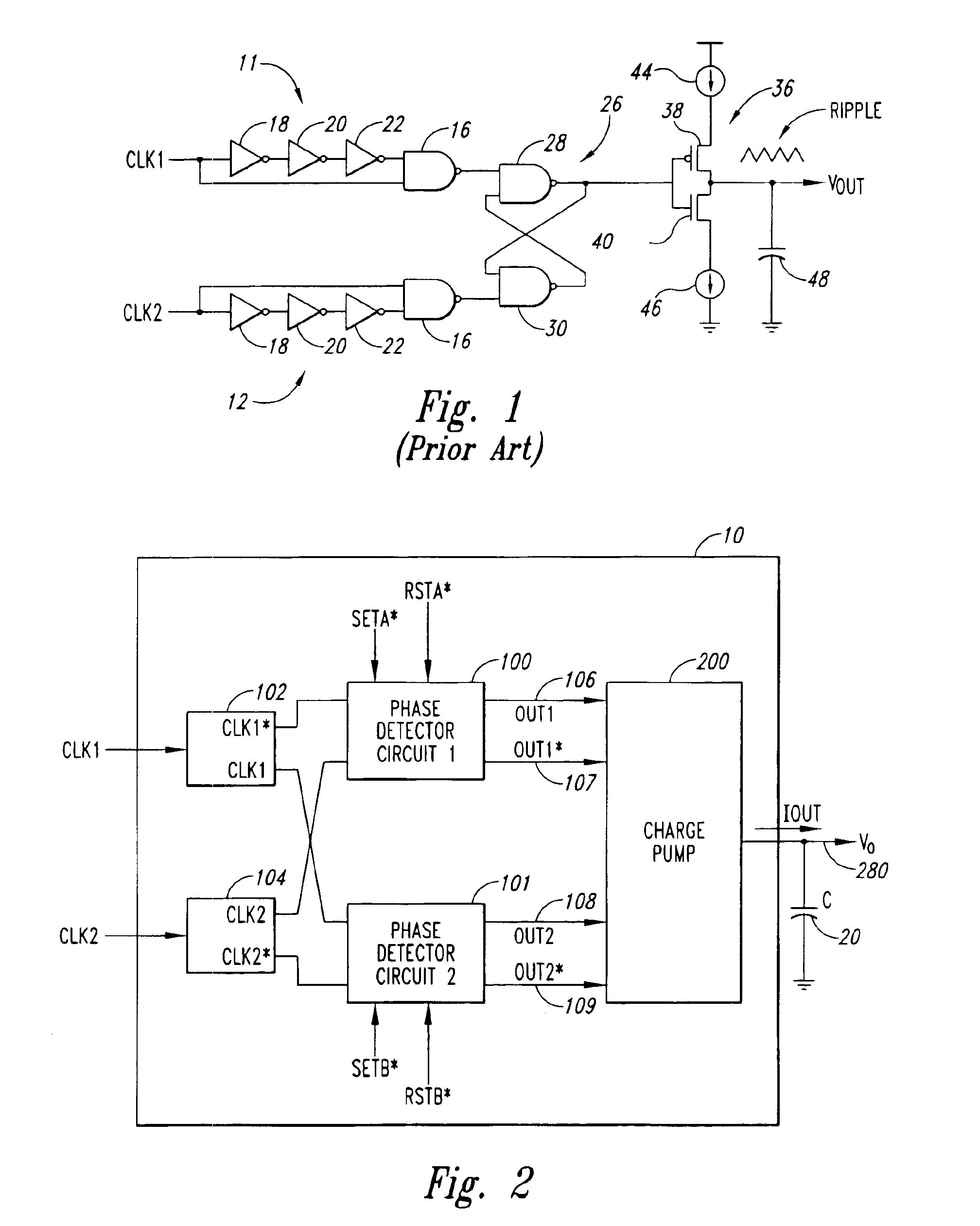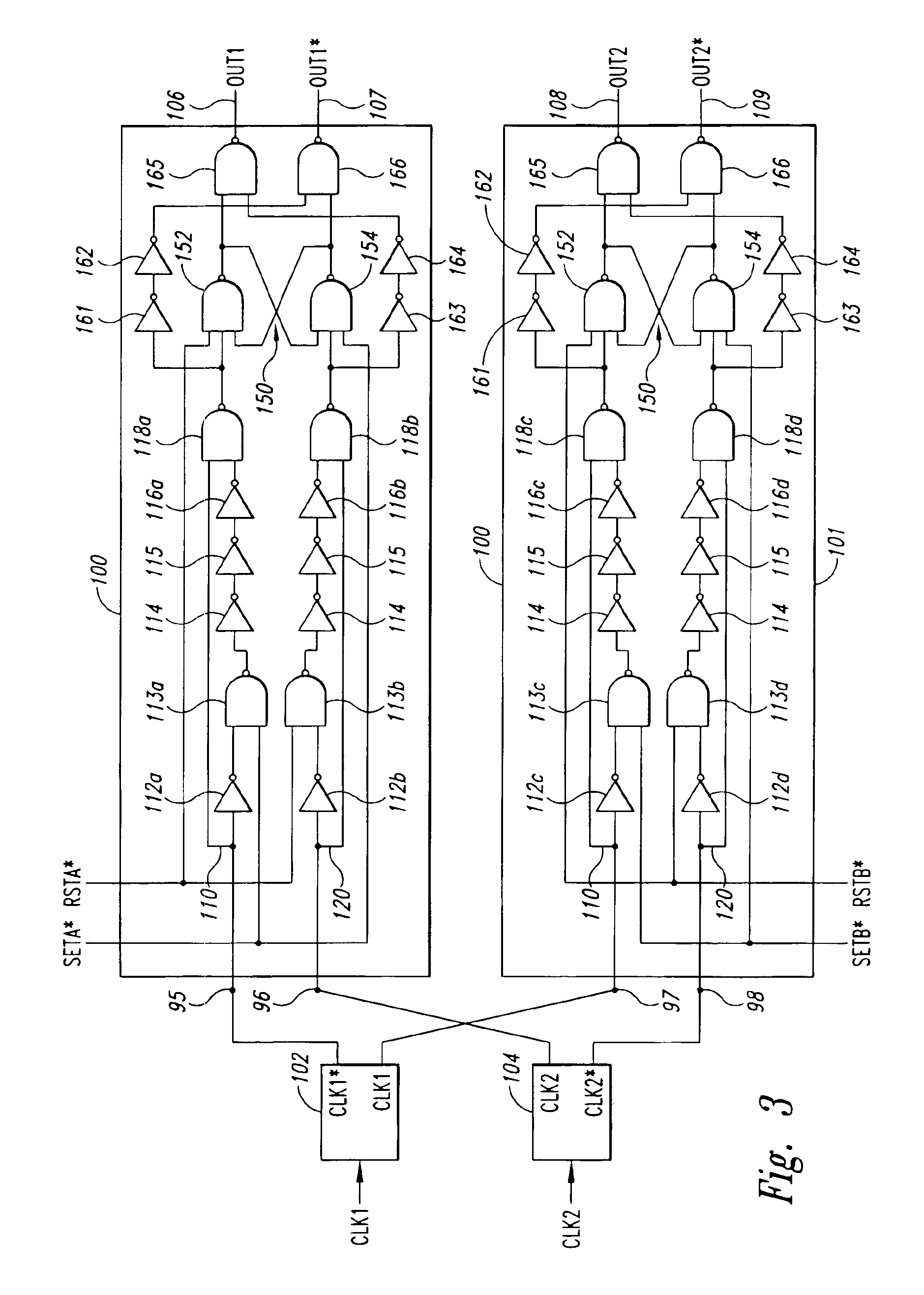Method and apparatus for generating a phase dependent control signal
a phase dependent control and signal technology, applied in the direction of amplitude demodulation, pulse technique, instruments, etc., can solve the problems of slow processor speed, sram cache memory, and remaining components of existing computer systems
- Summary
- Abstract
- Description
- Claims
- Application Information
AI Technical Summary
Benefits of technology
Problems solved by technology
Method used
Image
Examples
Embodiment Construction
[0023]An embodiment of a phase detector 10 in accordance with the present invention is illustrated in FIG. 2. The phase detector includes two single-to-dual signal converters 102, 104 that receive input clock signals CLK1, CLK2, respectively, and produce complementary clock signals CLK1*, CLK2* and non-complementary clock signals CLK1, CLK2 based on the original input clock signals. The single-to-dual signal converters may be implemented using a variety of designs known to one skilled in the art. For example, an inverter and transfer gate having the same propagation delay connected in parallel will produce a complementary and a non-complementary signal from an input clock signal. The CLK1, CLK1*, CLK2, CLK2* signals are transmitted to two phase detector circuits 100, 101 that produce select signals OUT1, OUT1*, OUT2, OUT2* and transmits them to a phase dependent signal source or a charge pump 200 via signal lines 106, 107, 108, 109, respectively. The charge pump 200 in turn generate...
PUM
 Login to View More
Login to View More Abstract
Description
Claims
Application Information
 Login to View More
Login to View More - R&D
- Intellectual Property
- Life Sciences
- Materials
- Tech Scout
- Unparalleled Data Quality
- Higher Quality Content
- 60% Fewer Hallucinations
Browse by: Latest US Patents, China's latest patents, Technical Efficacy Thesaurus, Application Domain, Technology Topic, Popular Technical Reports.
© 2025 PatSnap. All rights reserved.Legal|Privacy policy|Modern Slavery Act Transparency Statement|Sitemap|About US| Contact US: help@patsnap.com



